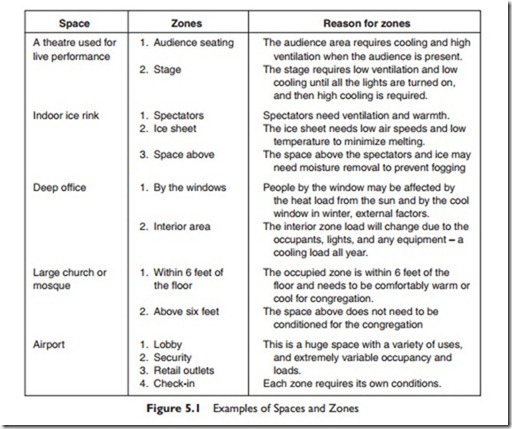Introduction
In Chapter 2, we discussed the fact that spaces have different users and different requirements, and in Chapter 4 we discussed issues of thermal comfort. To maximize thermal comfort, systems can be designed to provide independent control in the different spaces, based on their users and requirements. Each space, or group of spaces, that has an independent control is called a “zone.”
In this chapter, we consider what constitutes a zone, the factors that influence zone choices, and the issues concerning location of the zone thermostat.
What is a Zone?
We have introduced and used the words “space” and “zone” in previous chapters.
To recap, a “space” is a part of a building that is not necessarily separated by walls and floors. A space can be large, like an aircraft hanger, or small, like a personal office.
A “zone” is a part of a building whose HVAC system is controlled by a single sensor. The single sensor is usually, but not always, a thermostat. Either directly or indirectly, a thermostat controls the temperature at its location.
A zone may include several spaces, such as a row of offices whose temperature is controlled by one thermostat in one of the offices. On the other hand a zone may be a part of a space, such as the area by the window in a large open area office.
The zone may be supplied by its own, separate HVAC system, or the zone may be supplied from a central system that has a separate control for each zone.
Some examples of spaces and zones are shown in Figure 5.1.
Having established the meaning of a zone let us now consider the various reasons for having zones in a building’s HVAC system.
